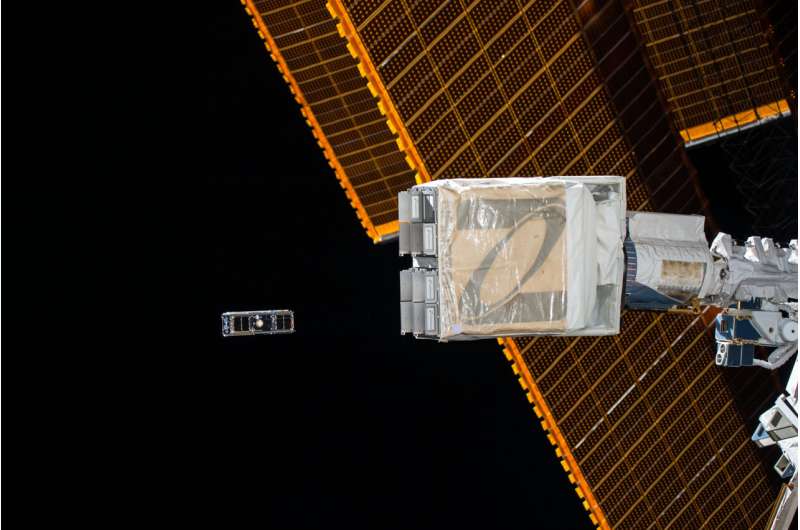Current fault tree diagnosis depends on the physics being simple and already known to engineers and scientists. For instance, if an instrument's temperature drops too low, the spacecraft can detect this situation and turn on heaters. If the current in a line spikes, the spacecraft may work to isolate the offending circuit. In both cases, the spacecraft simply knows that if "A' happens, respond by doing "B." What the spacecraft cannot do is figure out what caused these events, especially in unexpected fault cases: whether the spacecraft entered Earth's shadow or a micrometeoroid damaged a circuit.
These types of conclusions require the ability to follow a logical chain of non-trivial inferences—something like human reasoning, Gizzi said. The artificial intelligence (AI) might even be able to connect the spacecraft's decreased temperature with a malfunction in its internal heat regulation system: an example of a more catastrophic fault.
Referring such faults to a human on the ground does not just take time, but costs valuable resources in terms of communications networks and bandwidth for smaller missions in Earth orbit, or even for exploring distant planets, where bandwidth to controllers on Earth is limited by distance.
In other circumstances, like orbiting behind another planet or the Moon, contact is simply not available. Computers also excel over human controllers when a proper inference needs to be done extremely fast using several disparate types of data.
In its current stages, RAISR would not actively control the spacecraft in any way, but facilitates diagnosis by finding associations that a human may miss.

Michael Johnson, the Engineering and Technology Directorate chief technologist at Goddard, said current safe modes waste valuable time because science data collection ceases, whereas a technology that could diagnose and address a fault might lead to a quicker return to normal flight operations.
RAISR uses a combination of machine learning and classical AI techniques. While machine learning-based techniques can be particularly useful in diagnosing faults, its performance depends on having a large amount of diverse data, Gizzi said, and therefore usually addresses faults that have happened in the past. With anomalies, which are faults that have never been experienced, there simply may not be enough data to create sound reasoning with machine learning-based techniques. That is where classical AI steps in, Gizzi said, facilitating reasoning in more complicated situations that don't have previous data to inform decisions.
Gizzi's technology helps make connections that are extraordinarily difficult to be made by humans, said Conrad Schiff, an assistant chief for technology in the software engineering division at Goddard.
"It's not just an automated system," Schiff said. "It's an autonomous system that attempts to reveal how it arrived at the 'whodunit." Laying out the evidence like a detective at the end of a mystery novel, so that we all can see who is guilty of murder—that's the same principle here. It understands these associations, it helps us understand its reasoning in arriving at its conclusion."
RAISR enables better collection of data and observations by reducing resources needed for the maintenance of the systems themselves, Schiff added. "It's less glamorous, it's grittier, but it's making sure the health and safety of the thing producing the data is maintained as best as we can."
In general, AI can act like an additional brain within the spacecraft.
"You're taking an engineer or a scientist from the lab and putting a simplified copy of them in the spacecraft, so they can make intelligent decisions in situ," Johnson said.
RAISR's next steps include a demonstration on a small satellite mission, Gizzi said, where it can make real-time diagnosis decisions to compare with ground control.
As more missions adopt AI techniques, Johnson said, testing approaches may have to shift. Rigorous protocols that test every possible scenario might not apply. That, combined with the cultural shift from ground-based problem resolution to letting the on-orbit systems solve problems themselves, makes putting AI in spacecraft an incremental journey, he said.
"When I think about spaceflight, it's a target for autonomous systems that just makes sense," Johnson said. "The real leap occurs when we go beyond automation to autonomy, from programming steps you know will happen to the system starting to think for itself. When you go into deep space, there are going to be things you did not program for. The need is really there."
Explore further



